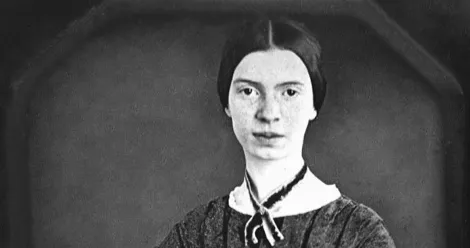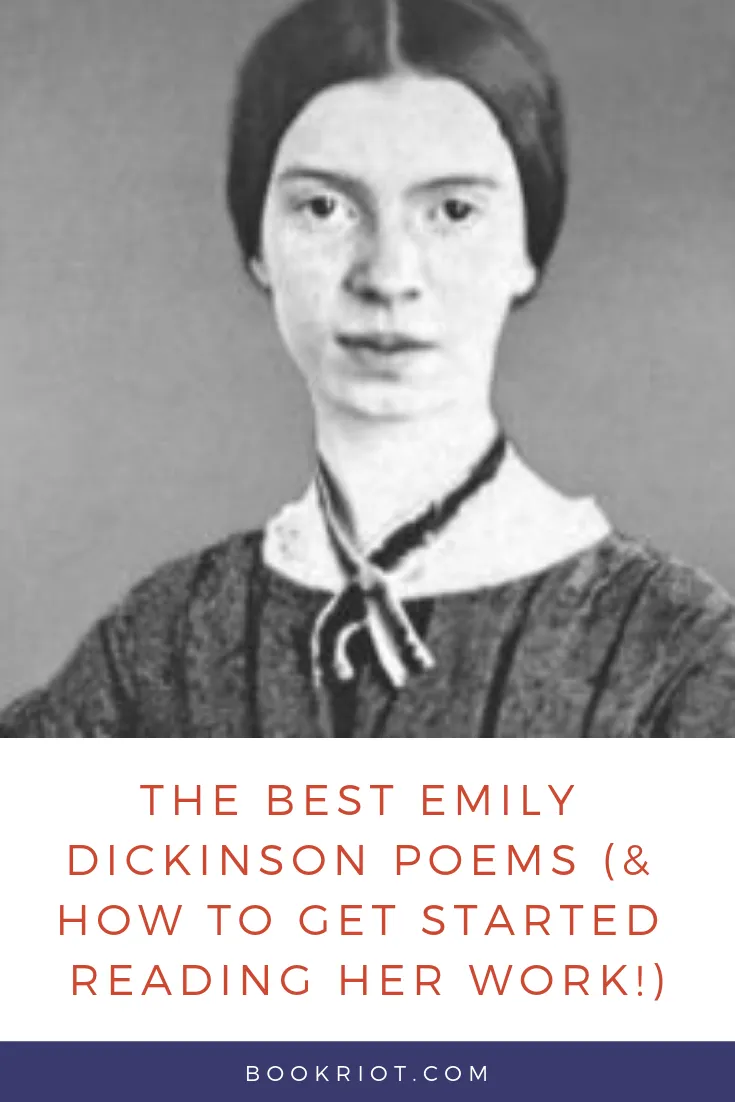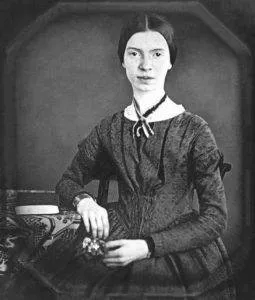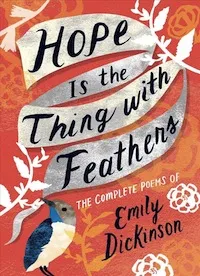
The Best Emily Dickinson Poems and How to Get Started Reading Her Work
This content contains affiliate links. When you buy through these links, we may earn an affiliate commission.
This guide to the best Emily Dickinson poems is a tribute to my very favorite poet. If you’re interested in reading more of her work, this is where to get started.

 Dickinson’s poetry was quite different than the established poetic standard of 19th century American literature. She used short sentences, dashes, slant rhyme (words that don’t quite rhyme), and other poetic techniques that weren’t in common usage at the time. Like the poetry of another groundbreaking 19th-century poet, Walt Whitman, Dickinson’s work, its immediacy and cleverness and distinct voice, had a huge impact on American poetry.
Her favorite subjects were big topics: death, immortality, faith, pain, grief. She had a relatively short life troubled by illness. And yet her work feels almost as fresh and new now as it must have then, and there are hints of humor that burst through. As one of my university professors once told me, she’s a tough-minded poet.
Dickinson’s poetry was quite different than the established poetic standard of 19th century American literature. She used short sentences, dashes, slant rhyme (words that don’t quite rhyme), and other poetic techniques that weren’t in common usage at the time. Like the poetry of another groundbreaking 19th-century poet, Walt Whitman, Dickinson’s work, its immediacy and cleverness and distinct voice, had a huge impact on American poetry.
Her favorite subjects were big topics: death, immortality, faith, pain, grief. She had a relatively short life troubled by illness. And yet her work feels almost as fresh and new now as it must have then, and there are hints of humor that burst through. As one of my university professors once told me, she’s a tough-minded poet.
 You can get yourself a big anthology of Emily Dickinson’s famous poems, like Hope Is the Thing with Feathers or The Essential Emily Dickinson. But if you want to read some before you commit, here’s where to get started with the best Emily Dickinson poems.
A few things to know: Dickinson didn’t often title her poems, so they are commonly referred to by their first line. She also used idiosyncratic capitalization and punctuation (including many dashes).
You can get yourself a big anthology of Emily Dickinson’s famous poems, like Hope Is the Thing with Feathers or The Essential Emily Dickinson. But if you want to read some before you commit, here’s where to get started with the best Emily Dickinson poems.
A few things to know: Dickinson didn’t often title her poems, so they are commonly referred to by their first line. She also used idiosyncratic capitalization and punctuation (including many dashes).
You can read more about Emily Dickinson poems here and here, or even buy something with her face on it in the Book Riot store!

Who is Emily Dickinson?
An inventive and wildly original writer, Dickinson (1830-1886) was known to be somewhat reclusive. She was very prolific, writing almost 1,800 poems, but hardly any were published until after her death. Much of her writing was found after she died by her sister, Lavinia, but even then, her poetry was often altered by editors before it was published. Dickinson’s poetry was quite different than the established poetic standard of 19th century American literature. She used short sentences, dashes, slant rhyme (words that don’t quite rhyme), and other poetic techniques that weren’t in common usage at the time. Like the poetry of another groundbreaking 19th-century poet, Walt Whitman, Dickinson’s work, its immediacy and cleverness and distinct voice, had a huge impact on American poetry.
Her favorite subjects were big topics: death, immortality, faith, pain, grief. She had a relatively short life troubled by illness. And yet her work feels almost as fresh and new now as it must have then, and there are hints of humor that burst through. As one of my university professors once told me, she’s a tough-minded poet.
Dickinson’s poetry was quite different than the established poetic standard of 19th century American literature. She used short sentences, dashes, slant rhyme (words that don’t quite rhyme), and other poetic techniques that weren’t in common usage at the time. Like the poetry of another groundbreaking 19th-century poet, Walt Whitman, Dickinson’s work, its immediacy and cleverness and distinct voice, had a huge impact on American poetry.
Her favorite subjects were big topics: death, immortality, faith, pain, grief. She had a relatively short life troubled by illness. And yet her work feels almost as fresh and new now as it must have then, and there are hints of humor that burst through. As one of my university professors once told me, she’s a tough-minded poet.
 You can get yourself a big anthology of Emily Dickinson’s famous poems, like Hope Is the Thing with Feathers or The Essential Emily Dickinson. But if you want to read some before you commit, here’s where to get started with the best Emily Dickinson poems.
A few things to know: Dickinson didn’t often title her poems, so they are commonly referred to by their first line. She also used idiosyncratic capitalization and punctuation (including many dashes).
You can get yourself a big anthology of Emily Dickinson’s famous poems, like Hope Is the Thing with Feathers or The Essential Emily Dickinson. But if you want to read some before you commit, here’s where to get started with the best Emily Dickinson poems.
A few things to know: Dickinson didn’t often title her poems, so they are commonly referred to by their first line. She also used idiosyncratic capitalization and punctuation (including many dashes).
1. Because I could not stop for Death
Because I could not stop for Death – He kindly stopped for me – The Carriage held but just Ourselves – And Immortality. We slowly drove – He knew no haste And I had put away My labor and my leisure too, For His Civility – Read more here.2. I’m Nobody! Who are you?
I’m Nobody! Who are you? Are you – Nobody – too? Then there’s a pair of us! Don’t tell! they’d advertise – you know! Read more here.3. Hope is the thing with feathers
Hope is the thing with feathers That perches in the soul, And sings the tune without the words, And never stops at all, And sweetest in the gale is heard; And sore must be the storm That could abash the little bird That kept so many warm. Read more here.4. I felt a Funeral, in my Brain
I felt a Funeral, in my Brain, And Mourners to and fro Kept treading – treading – till it seemed That Sense was breaking through – And when they all were seated, A Service, like a Drum – Kept beating – beating – till I thought My Mind was going numb – Read more here.5. I dwell in Possibility
I dwell in Possibility – A fairer House than Prose – More numerous of Windows – Superior – for Doors – Of Chambers as the Cedars – Impregnable of eye – And for an everlasting Roof The Gambrels of the Sky – Read more here.6. Much Madness is divinest Sense
Much Madness is divinest Sense – To a discerning Eye – Much Sense – the starkest Madness – ’Tis the Majority Read more here.7. My Life had stood – a Loaded Gun
My Life had stood – a Loaded Gun – In Corners – till a Day The Owner passed – identified – And carried Me away – And now We roam in Sovreign Woods – And now We hunt the Doe – And every time I speak for Him The Mountains straight reply – Read more here.8. I heard a Fly buzz
I heard a Fly buzz – when I died – The Stillness in the Room Was like the Stillness in the Air – Between the Heaves of Storm – The Eyes around – had wrung them dry – And Breaths were gathering firm For that last Onset – when the King Be witnessed – in the Room – Read more here.9. Tell all the truth but tell it slant —
Tell all the truth but tell it slant — Success in Circuit lies Too bright for our infirm Delight The Truth’s superb surprise As Lightning to the Children eased With explanation kind The Truth must dazzle gradually Or every man be blind —10. I measure every Grief I meet
I measure every Grief I meet With narrow, probing, eyes – I wonder if It weighs like Mine – Or has an Easier size. I wonder if They bore it long – Or did it just begin – I could not tell the Date of Mine – It feels so old a pain – Read more here.You can read more about Emily Dickinson poems here and here, or even buy something with her face on it in the Book Riot store!











